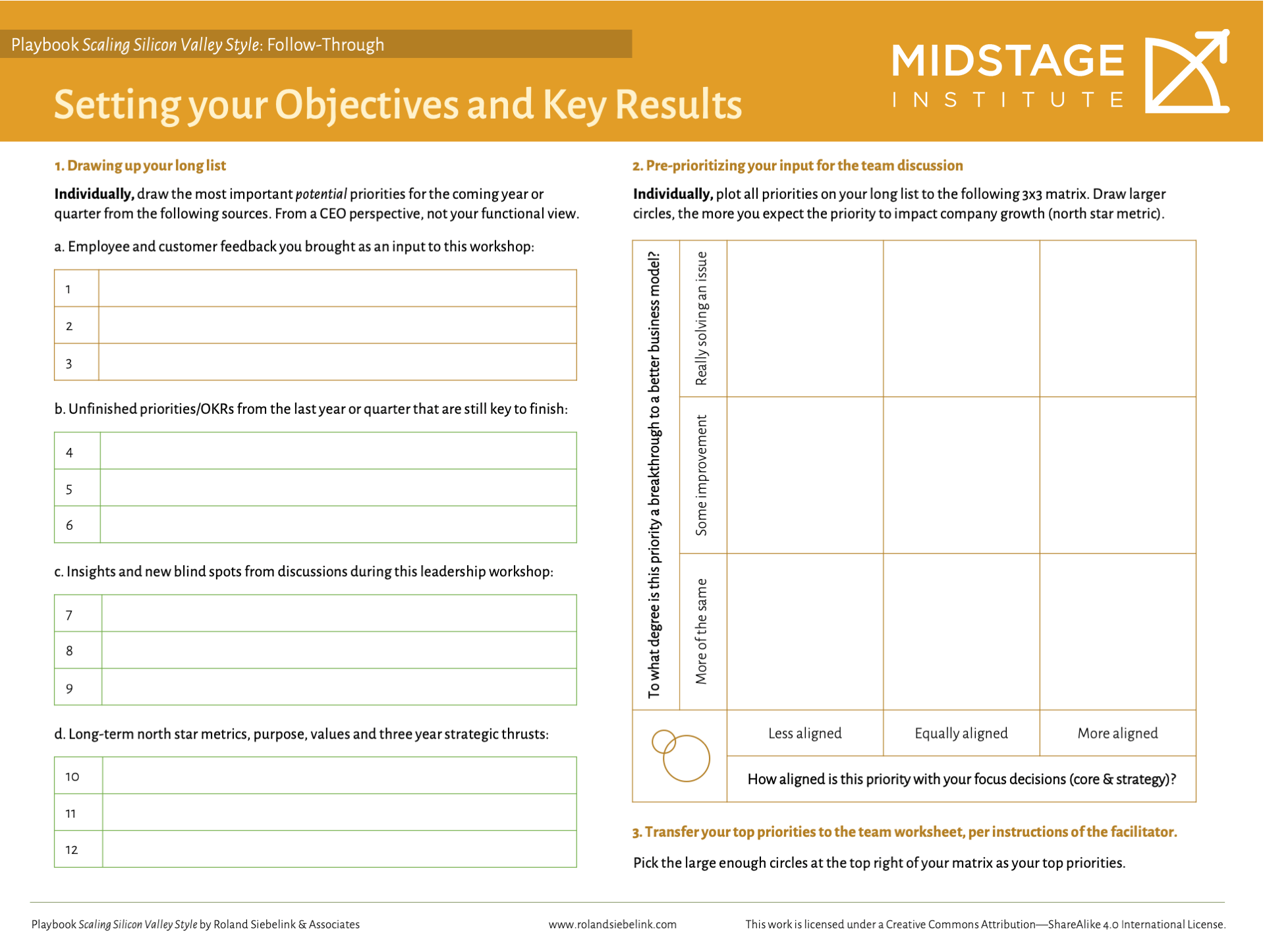How to Pick Effective Top Team OKRs
How does your top team in your startup or scaleup pick the most effective OKRs for their top team?
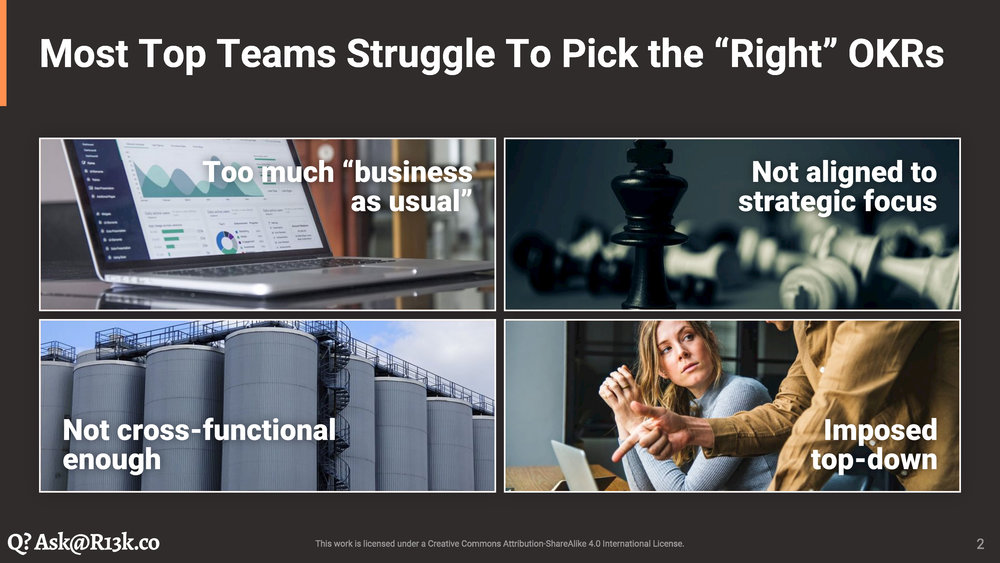
I’ve worked with many top teams of scaleups and startups to help them pick the right OKRs. This is not something that always comes naturally to these teams. Here are some mistakes I often see:
-
Business-as-Usual Metrics: Many of the OKRs are business-as-usual. Sales, service levels, maybe profitability. These are not typically the metrics you’d want to see in an OKR. What should be in an OKR is what really changes the business. What starts really moving the needle away from the business as usual.
-
Functional Silos: We often see OKRs that are just representing the different functions in the business. What we are really looking for is the change that starts creating value across the different functions. In other words, cross-functional OKRs like a new capability, attacking a new market, maybe implementing a new system that makes everyone in the company more productive.
-
Misalignment with Strategy: OKRs not aligned with the strategic decisions you’ve already taken. A quick example would be: you’ve decided to only focus on enterprise customers and now one of your OKR is going to be “let’s launch a consumer product.”
-
Imposed by Leadership: Maybe the most common it is that the OKRs are not really developed in the meeting but are essentially already imposed on the team by the CEO and maybe one of their trusted assistants.

“You all agree, right? That sounds excellent!” Well, if you are the CEO that is in this situation or you’ve ever been in a team like this, you know how it goes. It all feels like the team agrees, but they’re not enthusiastic, most of them are silent and not giving you any feedback. In other words, you have not created the buy-in that you need to actually turn those OKRs into real results at the end of the quarter or the year.
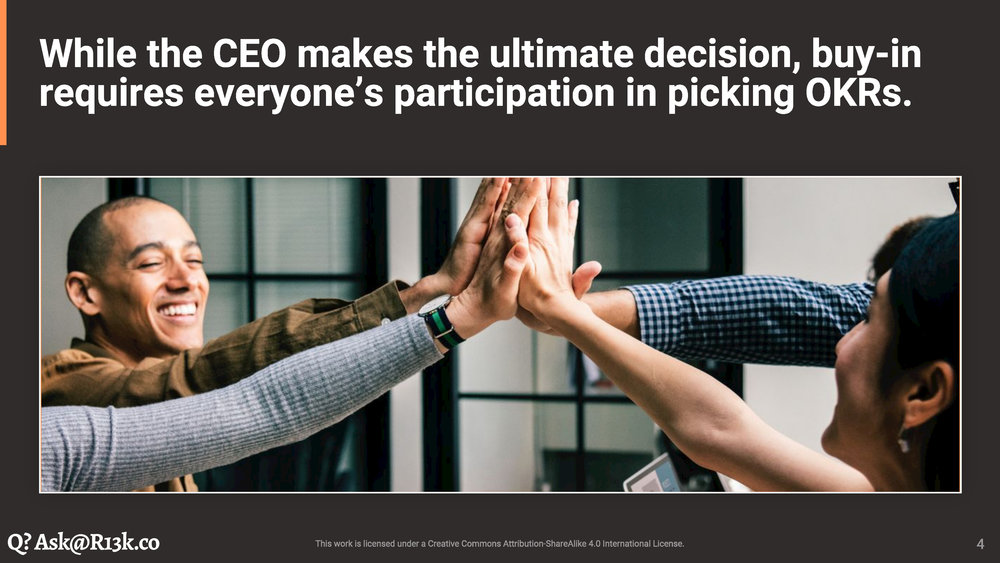
Of course, as a CEO you have the ultimate call about what the objectives of the business are going to be, but what if you were to develop these first together with the team so that you also have maximum buy-in. In my experience, the CEOs that trust that process will see that the team actually comes up with a better selection of OKRs than they would have done themselves. In other words, they can fully buy into the selection of the team, getting the trust in the right metrics, but also the buy-in of the team as an extra bonus. Now there are some other reasons why developing the OKRs with the team is important and those are mostly about the quality of the OKRs.

Here are some examples from clients that I’ve worked with, anonymized.
A company that was building hugely aggressive targets for its sales team, service team and other teams. They realized they needed to hire at least 40 people on a basis of 80, so a 50% increase. And then they started realizing: without those people we are never going to make any of these targets. So this is actually the top OKR for the quarter to hire so many people. And for the first quarter, it is actually important to have the recruiting specialists in place. They didn’t have any recruiting specialist nor anybody responsible for human resources. So the first OKR they really set was to hire a VP of people and that person was solving many issues from the moment they were hired.
Another client had a tendency to pick OKRs around product improvements, product development, and feature development. They started realizing that by putting so much of the onus of success of the business only on the product department, engineering departments, they were completely overloading them. And they were ignoring all the other things they could do to make the business run better. More sales training, better marketing, proactive feature marketing before the feature even got delivered to see what the customer interests would be, making a change in billing so that the cash would flow in earlier. All these small improvements together actually led to a much better run business that was not fully dependent anymore on just the delivery of the product and the engineering department.

What often happens is that the results drawn up by the CEO are focused only on the lagging metrics that they need to show the board: ARR, sales, gross margin, operating margin, numbers like that. Those of course are the important metrics for the business, but the problem is you cannot really impact those directly when you’re in the business because they only get measured after they’re already delivered.

What we want to identify is the leading metrics, the things that lead to these numbers. For example, can we improve the pipeline speed in getting to our sales or can we generate more leads or can we have better systems so that people can do more work with the same time in the day and thereby our operating margin goes up. By developing your OKRs together with your team, you’re going to naturally land more on those leading metrics and thereby have a far bigger chance that everyone buys into and helps you deliver those results that really matter.
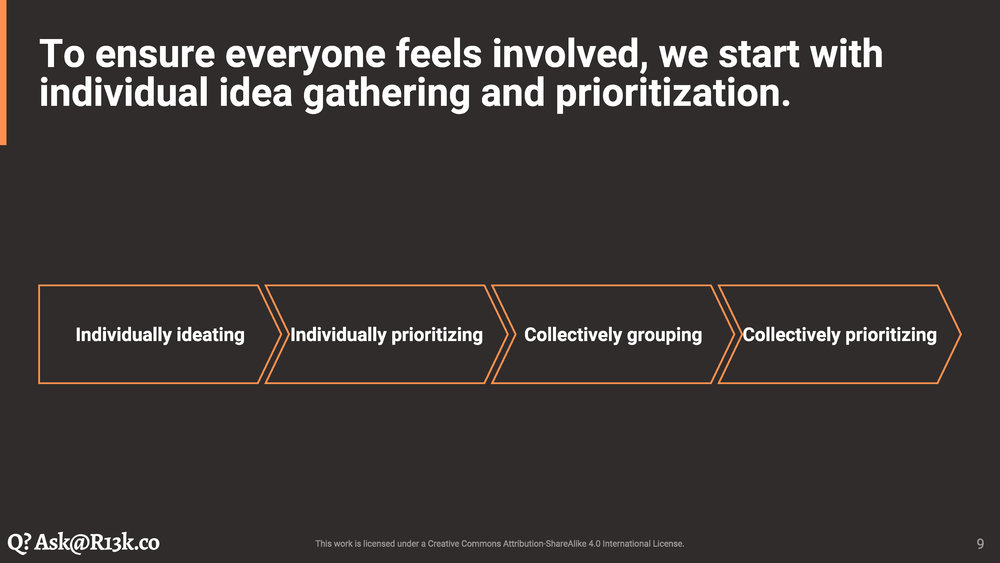
A good workshop has an OKR setting team that starts with individual gathering of potential priorities so as to maximize the diversity of the input. Then also individual prioritization, but according to the same criteria so that everyone starts to come to terms with, well, there’s going to be trade offs and you can’t have everything on the list. It’s only then that you start bringing together all the priorities that people have developed. And we typically just use a flip chart, or an affinity board to, pull all the priorities together to find the common themes and then see what the priorities should be. Ultimately, it’s through counting, but also through discussion. And of course, ultimately a call from the CEO that you get to the final list of maximum five OKRs for the year or for the quarter.
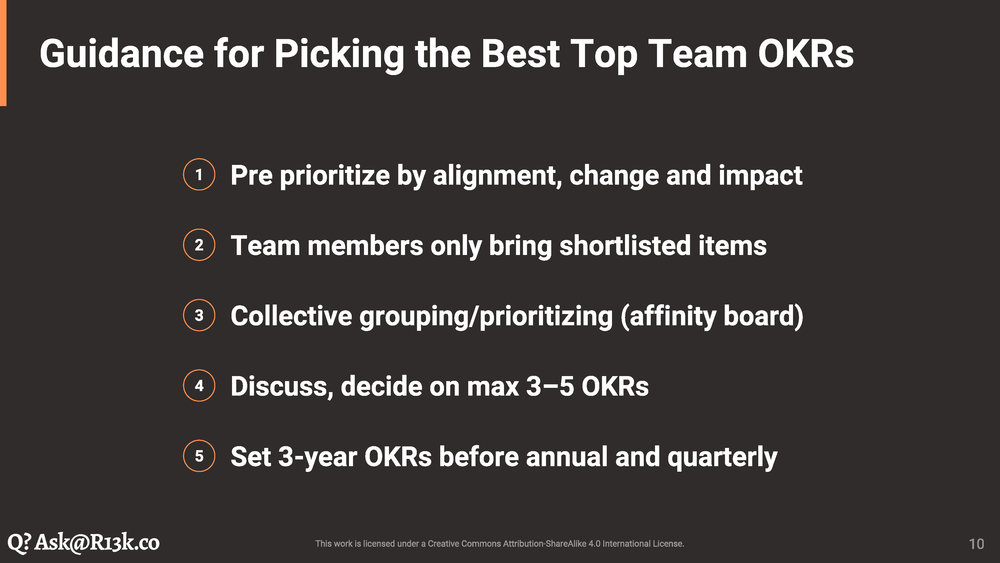
Here is some further guidance for making sure you pick the best OKRs for your top team.
-
Let everyone prioritize by the same three dimensions: (1) alignment to the strategic decisions (2) the degree of change from business as usual and (3) is the size of the potential impact or the potential growth. This is already neatly modelled in the matrix that you see on the right of our worksheet.
-
Once people have prioritized (individually) their long list to a shortlist, the team members only bring the shortlisted items to the board where you pull everything together.
-
In a collective grouping exercise, you start to look at what are the themes that have come up most because usually the wisdom of crowds will give you the best feel for what really should be a priority for the business. The one caveat I would give there is watch a little bit for the diversity in the team, especially functional diversity, for example, what you don’t want is that five engineers in their room will always pick new technologies and then the lone finance person, it’s never going to get the system that could actually impact the results of the company much better.
-
Try to limit everything to maximum five OKRs even better is three OKRs for that top team. To really focus and have a high chance of reaching all of them. And finally this sheet can be used for quarterly OKRs; it can be used for annual OKRs; some company even use it for three yea OKRs. It’s perfectly fine to do this exercise three times in a row using separate copies of the same sheet. But of course make sure that you start with the long-term before you go mid-term and then you do short-term.
Download the worksheet Setting Objectives and Key Results below
